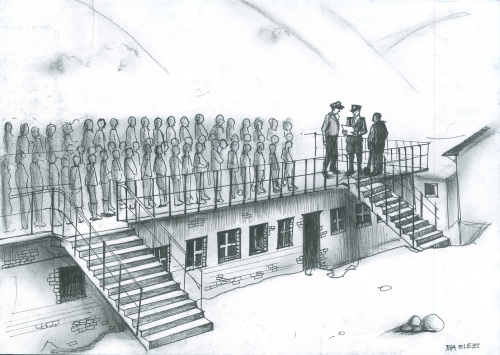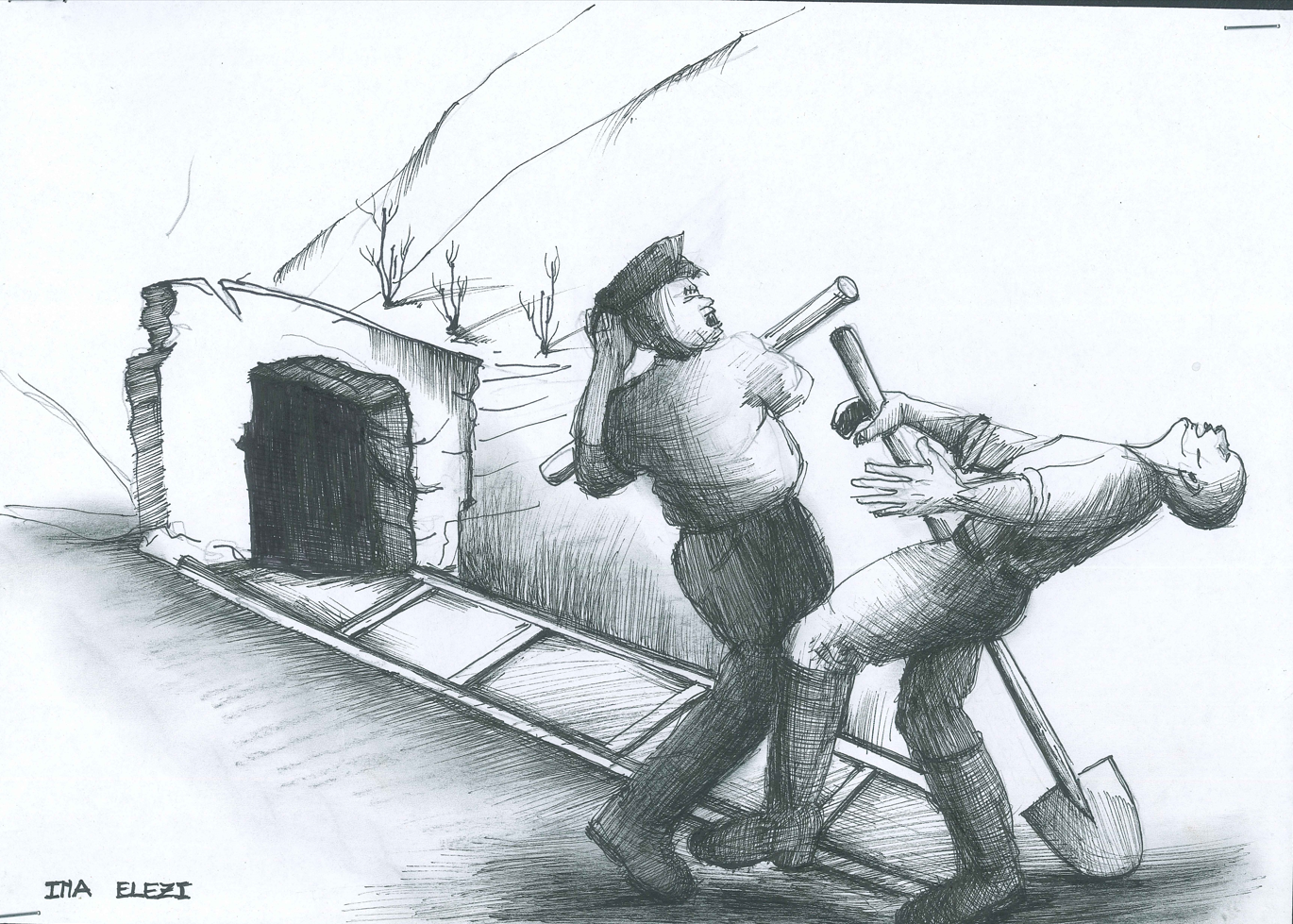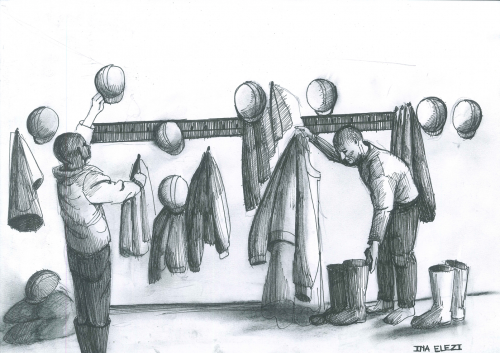


In the first years of Spaç Camp’s operation, roll call was done at the area in front of the sleeping rooms and craftsman’s barracks. Later, it was done on top of the recently built toiletroom.The sketch shows the latter, where Spaç’s prisoners gathered.As the toilets were rebuilt isolated from above as well, two sets of stairs were used to climb on top, where prisoners gathered to do roll call.Even here, it wasn’t rare that prisoners were held two to three hours in the sun, rain or snow, while officers checked each prisoner.

Meeting the rates was often impossible. Few prisoners could physically handle that titanic load at work. In many cases during the cave-ins in the tunnel, there was not enough mineral to fill seven wagons. But prison command never accepted any justification for not meeting the rate. The most common expression of officers in Spaç was “Either your plan (target) or your soul”, which implied that death awaited all those who didn’t give the regime whatever was required at all costs.

Prisoners in Spaç were also provided with prison clothing, which was used both during work and rest in the camp.The provision for each prisoner included:two cotton twill costumes a year, a brown fur coat (stuffed with cotton waste) once every three years, two pairs of long underpants and two stiff poplin shirts, which, as ex-prisoner Shkëlqim Abazi testifies, “that fabric rubbed on the skin like sandpaper”, two pairs of puttees (square pieces, the same material as shirts, with which they wrapped their feet before putting on their boots, when they went to the mine), a pair of rubber moccasins and a cloth hat like the puttees’ fabric.At the beginning of the ‘70s, a cotton twill fur costume was added, stuffed with cotton waste and sewn with seams to hold the cotton inside.This product was designed to better handle the cold in the mine, but it was very heavy and uncomfortable for the mine’s conditions, adding to the prisoners another form of suffering, as it would absorb the humidity during the eight hours in the mine, increasing manifold the miners’ weight by the time they exited.During winter they would not dry until the next day and were thus often a source of disease for prisoners.Prisoners were also provided with a cotton twill jacket thinly coated with resin that served as mackintosh.The uniform also had two pairs of gloves and wool socks and two pairs of rubber boots and a carton cap.The work clothes were held at the clothes warehouse in the camp.
Family meetings were done according to a monthly schedule determined by prison command. Prisoners were entitled to meet their families twice a month for 15 minutes. Furthermore, they could send two letters a month to their families, whereas telegrams and cards were allowed with no limitation. Meetings were always done in the presence of wardens.

Those who didn’t meet the target were often tied to a column at the tunnels’ exit and left there tied all night or day until the end of the shift. The torture was severely more excruciating during extreme frosts.